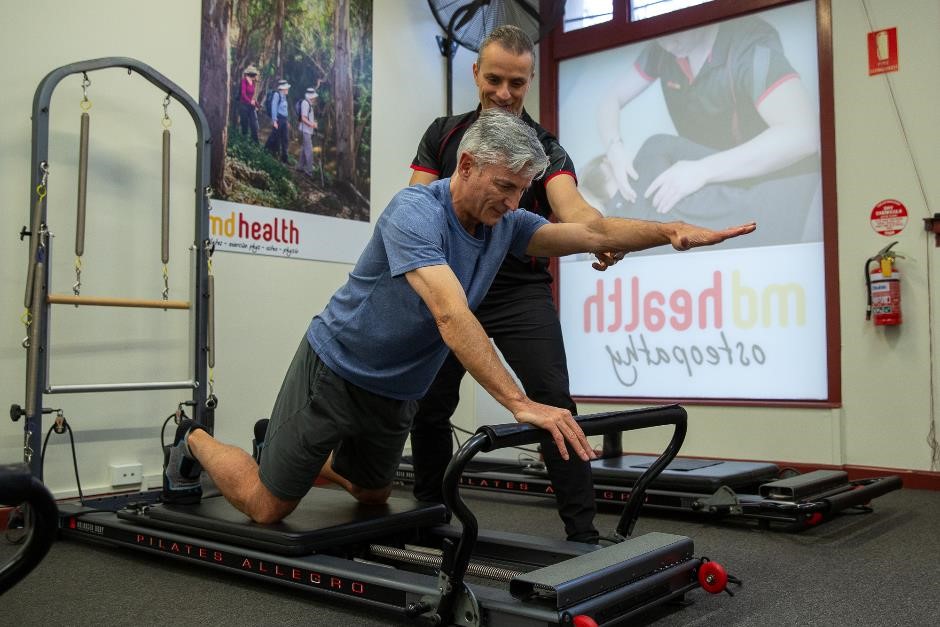It’s easy to give a new class “a go” or just to join in and see how it feels. You may feel that you “worked hard”, so it must be a good session and has done you good, right?
Maybe.
One session doesn’t make a program and is not going to give you an idea of what you will feel like in the future.
In reality, the whole point of an exercise program is not just to feel like you’ve done something at the time, but to get an outcome for the long term. Exercise is training, for a particular purpose. Doing a series of exercises will make you feel like you’ve worked at the time. However, a few weeks, months or years later, you may not have moved closer to the goal you desire.
The point of customised and tailored exercises:
Everyone has different goals. All are starting from a different base of strength and fitness and have different injuries and issues.
An exercise for one person can be great to achieve their goals. Yet, for another, may aggravate this injury or be either too easy or too hard for their needs. Over the past 20 years, we have started each program with a Full Body Assessment. This allows us to have a deep understanding of an individuals’ goals, strengths, weaknesses, injuries and issues.
The golden rule seems to be that whatever area we don’t assess initially, is the area the client will have problems with once they start exercising. The whole point of an exercise program is to get results and to move clients closer towards their goals. It’s not go around in circles and deal with setbacks and injuries that limit progress.
Some of the most rewarding assessments that I have done have actually been when clients have had very little injuries and issues and have really underestimated what they can do. The pleasure in a program like this is that we can often push people earlier. They can then be exercised at the right level to see change and achieve their goals earlier.
Exercise is about finding the right level to push the muscles and joints a bit more than they are comfortable doing (overload). They then have a stimulus to change and improve. As your body adapts, load has to be increased to continue to give the body the stimulus to grow and adapt (progress overload). This is the art in the science, finding the “sweet spot”, which is enough to cause adaptation and growth. However, not too much that it causes injury and breakdown.
Specific exercises to address weaknesses
20 years ago, one of the most frustrating aspects of treating injuries was that, as a physiotherapist, you would wait for someone to hurt themselves before working on the stabilising muscles around the back, hips, pelvis, neck and shoulders. The crazy thing about this system was that, you knew these areas had to be strong to avoid injuring your body parts and joints. However, we would wait until after the injury had occurred to do something about it.
Most of the time we could see these injuries coming from a mile away, but didn’t act.
This doesn’t have to be the case. Beginning an exercise program by targeting the specific weaknesses in the stabilising muscles around the body, before adding compound lifts, such as deadlifts, squats and bench press has a much greater chance of success and achieving client goals.
If you do have an injury, this must be taken into consideration and worked with or around to achieve your goal. Just avoiding exercises for the area because it is “my injury” is not good enough. Addressing your rehabilitation needs at the same time as your training needs will lead to a much better and more complete, long term outcome.
What about cardio training or HIIT?
Cardio training is no different. People have different and specific needs. Depending on your needs, depending on what type and level of cardio training is right for you.
For example, if you play a sport like tennis, this involves a combination of general cardio fitness for endurance (to be able to play for 30 min to a couple of hours) and stop-start, sprint fitness during a point (anaerobic fitness).
Both these aspects need to be addressed in your program and tailored towards your fitness level. Just like strength training, you want to be training these cardio systems with a degree of progressive overload, a little bit more than you are currently able to do (so that your body adapts), but not too much, so that your body breaks down and you are not able to recover.
This is the role of a good trainer (or health professional), to tailor your exercise program to get results:
• Faster
• Towards your needs
• With reduced risk of injury
Often a good tailored program over time will result in you exceeding your wildest expectations and living the life you only dreamed of.
Do you have any questions?
Call us on (03) 9857 0644 or (07) 3505 1494 (Paddington)
Email us at admin@mdhealth.com.au
Check out our other blog posts here
Our clinical staff would be happy to have chat if you have any questions.



